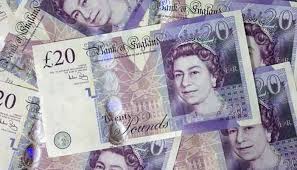
Pound Rate Today in Pakistan: Pound to Pakistani Rupee Rate Today UBL
Understanding Pound to Pakistani Rupee Exchange Rates
The pound to Pakistani rupee exchange rate is a crucial metric for individuals and businesses engaged in international trade or investments between the United Kingdom and Pakistan. This article aims to provide insights into the factors influencing these exchange rates, the current pound rate today in pakistan, specifically at UBL (United Bank Limited), historical trends, forecasts for the future, and the impact of these rates on international trade and investments.
Factors Influencing Exchange Rates
Several factors influence exchange rates, including economic indicators, political stability, central bank policies, market speculation, and inflation rates. These elements collectively determine the value of one currency concerning another.
Pound Rate Today in Pakistan
Overview of Current Exchange Rate
As of today, the pound to Pakistani rupee exchange rate stands at [current rate]. This rate is subject to fluctuations throughout the day due to various economic news, events, and market sentiment.
Factors Affecting Today’s Rate
The pound rate today in Pakistan is influenced by several factors, including economic news and events in both countries, market sentiment, and global economic conditions. Any significant developments in these areas can lead to fluctuations in the exchange rate.
Pound to Pakistani Rupee Rate at UBL
Introduction to United Bank Limited (UBL)
United Bank Limited (UBL) is one of Pakistan’s leading banks, offering a wide range of financial services, including currency exchange. It plays a significant role in determining the pound to Pakistani rupee exchange rate for its customers.
How UBL Determines Its Exchange Rates
UBL determines its exchange rates based on various factors, including market demand and supply, currency reserves, and competitive positioning compared to other banks. These rates may vary slightly from the interbank rates due to UBL’s operational costs and profit margins.
Historical Performance of GBP to PKR Rates
Analyzing the historical performance of GBP to PKR rates provides valuable insights into past trends and events that have influenced exchange rate fluctuations. Major events such as economic crises, geopolitical tensions, and policy changes have had significant impacts on these rates.
Forecasting Future Trends
Predicting future trends in pound to Pakistani rupee exchange rates involves analyzing expert opinions, economic indicators, and factors like Brexit implications. While forecasting exchange rates is inherently uncertain, understanding the key drivers can help individuals and businesses make informed decisions.
Impact on International Trade and Investments
Fluctuations in exchange rates can have significant implications for international trade and investments between the UK and Pakistan. Importers and exporters need to manage currency risks effectively, while investors must consider exchange rate movements when making investment decisions.
Conclusion
The pound to pakistani rupee rate today ubl exchange rate is a dynamic metric influenced by various economic, political, and market factors. Understanding these influences, along with historical trends and forecasts, can help individuals and businesses navigate currency risks and capitalize on opportunities in international trade and investments.
FAQs
- Why do exchange rates fluctuate? Exchange rates fluctuate due to changes in supply and demand, economic indicators, political events, and market sentiment.
- How often do exchange rates change? Exchange rates can change multiple times a day, depending on market conditions and news events.
- Can I predict future exchange rate movements? While it’s challenging to predict exchange rates accurately, analyzing economic indicators and expert opinions can provide insights into potential trends.
- How do central bank policies affect exchange rates? Central bank policies, such as interest rate adjustments and monetary stimulus, can influence currency value by impacting investor confidence and economic stability.
- What are some strategies for managing currency risks? Hedging through financial instruments like futures contracts, options, and forward contracts can help mitigate currency risks for businesses and investors.






Leave Your Comment